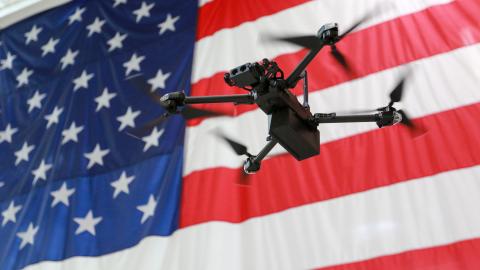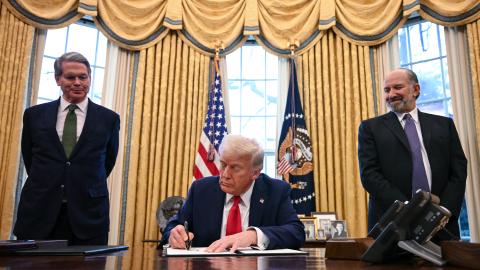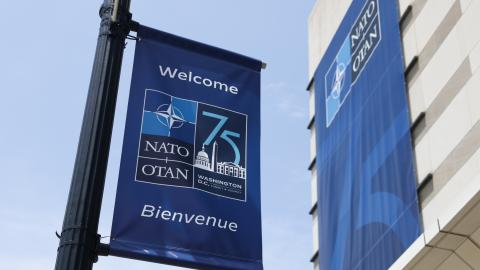As leaders from 32 NATO countries gather in Washington this week, their agenda will resemble the one from last year’s summit in Lithuania. Time will be devoted to the sticky issue of meeting NATO members’ 2014 pledge to spend at least 2 percent of GDP on defense, as well as to combating terrorism, nuclear nonproliferation, ballistic missile defense, and climate change — and of course the war in Ukraine.
Yet the war is the issue that threatens to tear the alliance apart. Biden’s boastful claim that Putin’s invasion of Ukraine gave new life and purpose to NATO has proved premature. Polls in one NATO country after another show a growing dissatisfaction with the course of the war, as the prospect of Ukraine’s winning fades and the cost of support shows no sign of abating.
The truth is, NATO is in crisis. Not only will the politicians meeting in D.C. have to deal with a failing American president, but they face a war in Ukraine that is dragging the alliance deeper and deeper into a strategic quagmire.
All this suggests that it’s time for NATO, which was created 75 years ago in the shadow of the Cold War, to find a new direction and new sense of purpose.
In short, the alliance needs a new look, a term borrowed from the Eisenhower administration’s “New Look” rethinking of America’s defense in the 1950s. That repurposing focused on getting the most bang for the buck by countering Russia’s key advantages in numbers of soldiers and tanks with our superior technological advantage, including nuclear weapons.
A new president, and a new realism about what’s happening in Ukraine, would offer an opportunity to rethink and repurpose NATO for what it does best: serving as an effective defensive alliance for Europe and the Atlantic community.
We can start by admitting that the North Atlantic Treaty Organization carried a fatal flaw from the outset. Everyone in 1949 knew that the alliance came together in order to halt Russian expansion into Western Europe, but publicly the alliance was advertised as a way to change the world for the better — a mini U.N., in fact.
The chairman of the Senate Foreign Affairs Committee even pronounced it “an alliance against war itself,” and Secretary of State Dean Acheson (who should have known better) defended it as a way to “maintain the peace, to advance human rights, to raise standards of living, and to promote the principle of equal rights and self-determination.” In keeping with these earlier conceptions, this week’s NATO meeting will waste valuable time discussing how to fight climate change.
It’s been this nebulousness of purpose that allowed U.S. leaders after 9/11 to take NATO where it clearly didn’t belong: first to Afghanistan and then, even more absurdly, to Iraq.
A new, more realistic approach would be to divide the alliance into a two-tier system, based on who contributes the most to the NATO defense posture, and to encourage the Europeans to take the lead on figuring out what’s needed for their common defense that won’t require more U.S. help. That’s the current Trump plan, according to Politico; it may have merit, but it won’t be popular with members who find themselves relegated to second-class status.
Another would be to use the alliance structure to pool the industrial and technological resources of NATO countries to cooperate on the advanced weapons systems for the future, e.g., hypersonics, UAVs, directed-energy weapons like lasers, and weapons deployed in space. In this regard, it’s misguided and misleading to rely on the 2 percent of GDP metric to measure the value of contribution to NATO. Countries such as France, Germany, and Italy have much more to contribute to advancing a 21st-century Arsenal of Democracies than simply squeezing another percentage point, or half a point, out of their national budget.
So instead of focusing on who contributes 2 percent of GDP to defense and who does not, the U.S. would look to those NATO members who can contribute most to deterring the military threat from Russia — as well as from China.
European NATO members will be reluctant to be seen building weapons aimed at China, and understandably so. Yet they make a huge mistake if they think they can stand aloof from a U.S.–China conflict. For one thing, there’s Article 5 of the NATO treaty, by which the U.S. can call on its European allies if attacked by China. For another, the nature of a war in the Indo-Pacific — whether over Taiwan or the Philippines or the East China Sea — will inevitably drag in European countries with global economic interests.
The conceit that the geopolitical conflict with China is America’s problem, not the rest of the free world’s, is a dangerous illusion. Repurposing NATO as a forum for advancing future defense technologies in general can be a way to address that.
The future of the alliance, indeed of peace and stability itself, may depend on how we can all get the most from our NATO commitment. Whatever happens this week in Washington, it’s time to bring NATO into the 21st century.


















